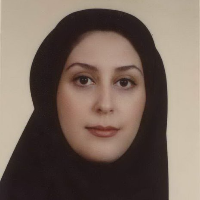Analysis of Dominant Discourses in the Formation of Pre-Islamic Saudi Art According to Norman Fairclough's approach
Author(s):
Article Type:
Research/Original Article (دارای رتبه معتبر)
Abstract:
In the pre-Islamic era, the Arabian Peninsula was a highway between Europe, Syria, Africa, Egypt, Asia, Mesopotamia and India, and in this sense, it was able to create a significant commercial position. This paper intends to examine the social history of Saudi Arabia in three economic, political and religious levels and explain the dominant discourses. The main question is how the dominant discourses of that era have influenced the formation of works of art? As a qualitive research, with a descriptive-analytical approach and desk-based data collection method, it has used the opinions of Norman Fairclough as its theoretical framework. Fairclaugh believes that in analyzing the discourse, one should analyze the productive institutions of the discourse; Institutions that shape power and ideology in the intertextual relationship. Based on this, he explains three levels of discourse: discourse as a text, discourse as an interaction between the process of textual production and interpretation, and discourse as an action space. In this approach, power relations are analyzed at three social, institutional, and situational levels, and attempts are made to analyze the social processes in the formation of the artwork, thereby analyzing the ideological structures and social system. The results of this research indicate that the dominant discourses were formed in the context of religion, that is Judaism and Christianity, which were strengthened by the Sassanid and Byzantine empires with a political approach. The Sasanians strengthened the Jewish religion and tried to change the ruling political discourse in their favor and use Arabia as a barrier against the Byzantine Empire. The Byzantine Empire spread Christianity in the region, so they built many churches in Arabia. Arab sheikhs were able to take over the commercial power of the region to maintain peace. Before the Jahili Arabs came to power, most of the Arab sheikhs were with the Jews, so the Sassanids were the dominant power in the eastern and southern regions. In northern Arabia, the influences of Byzantine architecture and art are quite evident, and iconography can be seen in works of art. At the same time, in the central plateau, Arab sheikhs took power in Mecca and Yathrib (Medina) and created a culture that flourished in the next era, with the advent of the Holy Prophet Muhammad. Also, the city of Mecca became a center for religious ceremonies and the Arabs came there every year. If luxury grew in the south, east and north of Arabia, instead, in Mecca and Medina, the discourse of simplicity became the dominant culture. After 661, the first Umayyad caliph, Muawiya ibn Abi Sufyan, chose Damascus as the capital. Therefore, although Islamic thought is rooted in the Arabian Peninsula, the dominant discourse in this era was simplicity and did not allow the formation of magnificent and royal art; This caused Islamic art to be influenced by non-native regions, namely Damascus with Christian thought and the Mesopotamia region with Iranian culture.
Keywords:
Language:
Persian
Published:
Journal of Fine Arts, Volume:28 Issue: 3, 2023
Pages:
53 to 63
magiran.com/p2686464
دانلود و مطالعه متن این مقاله با یکی از روشهای زیر امکان پذیر است:
اشتراک شخصی
با عضویت و پرداخت آنلاین حق اشتراک یکساله به مبلغ 1,390,000ريال میتوانید 70 عنوان مطلب دانلود کنید!
اشتراک سازمانی
به کتابخانه دانشگاه یا محل کار خود پیشنهاد کنید تا اشتراک سازمانی این پایگاه را برای دسترسی نامحدود همه کاربران به متن مطالب تهیه نمایند!
توجه!
- حق عضویت دریافتی صرف حمایت از نشریات عضو و نگهداری، تکمیل و توسعه مگیران میشود.
- پرداخت حق اشتراک و دانلود مقالات اجازه بازنشر آن در سایر رسانههای چاپی و دیجیتال را به کاربر نمیدهد.
In order to view content subscription is required
Personal subscription
Subscribe magiran.com for 70 € euros via PayPal and download 70 articles during a year.
Organization subscription
Please contact us to subscribe your university or library for unlimited access!



